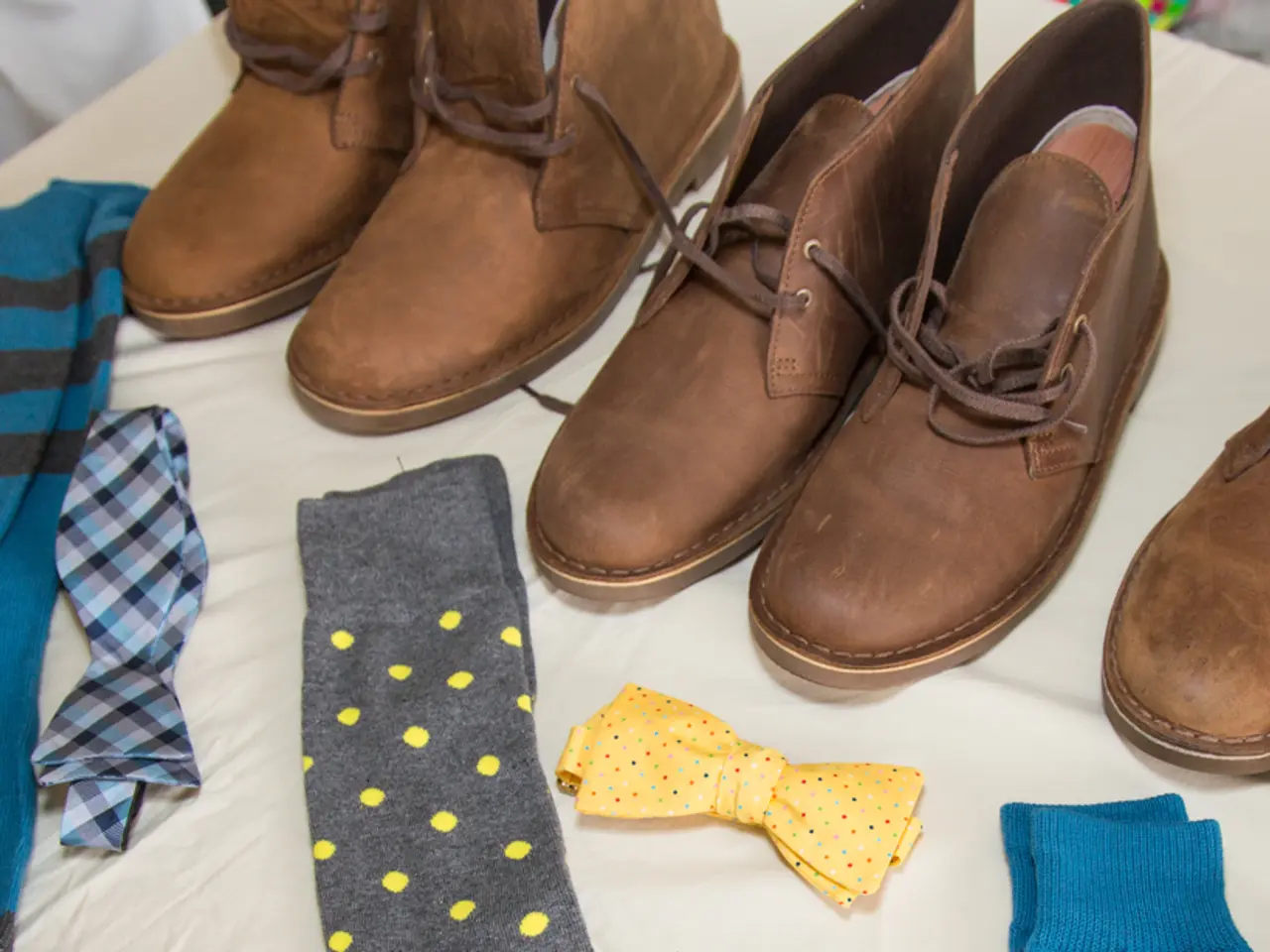Joining Second Hand September: Here's Your Guide!
The environmental and social impacts of fast fashion are becoming increasingly apparent, with the industry contributing around 10% of global carbon emissions - surpassing the emissions from all international flights and shipping combined [1][2][3][4]. Textile production alone generates approximately 1.2 billion tons of greenhouse gases annually [1][2][3]. This rapid, high-volume production causes substantial environmental damage, with synthetic fibres such as polyester and nylon - derived from fossil fuels - being non-biodegradable and persistent in landfills for centuries [1][2][3].
Moreover, fast fashion produces enormous amounts of textile waste, with an estimated 92 million tons of clothing ending up in landfills each year, often after being worn only a few times [1][2]. The industry's water usage is also substantial, with a single cotton t-shirt requiring up to 700 gallons of water to produce [1]. Polluting dyes and chemicals further harm ecosystems and water sources [1][2][3].
From a social perspective, fast fashion is linked to poor labor conditions. Garment workers, many in developing countries, often face unsafe working environments, underpayment (sometimes less than $3 a day), and exploitation [1][2][4][5]. The rapid production cycles and pressure to keep costs low exacerbate these issues, highlighting significant human rights concerns within the supply chain [1][2][4][5].
To combat these issues, initiatives such as Second Hand September are gaining traction. This campaign, initiated by Oxfam in 2019, encourages people to purchase only second-hand clothing for the entire month of September [6]. By reducing demand for new fast fashion items, Second Hand September helps lower production-related carbon emissions, water usage, and toxic pollution [2][4].
Engaging in Second Hand September promotes a cultural shift to value quality, durability, and reuse over disposable, low-cost fashion. It helps mitigate fast fashion’s footprint by encouraging mindful consumption and supporting circular fashion systems that prioritize sustainability and social responsibility [2][4].
In addition to Second Hand September, there are several other ways to participate in sustainable fashion. Selling unused clothes online or gifting them to friends, family, or charities is a way to dispose of them ethically [7]. Consignment shops offer a selection of higher-end and gently used items [8]. Upcycling or repurposing items can give them a new life instead of disposing of them [7].
Renting clothing using sites such as Beyond the Runway is an alternative to buying [9]. Fixing damaged items can also help prolong the use of clothing [10]. Having incorrectly sized clothing adjusted by tailoring can help extend its lifespan [10]. Washing clothes less and with appropriate wash cycle and cleaners can help prolong their life [11].
By choosing second-hand clothing, consumers can help reduce the negative environmental and social impacts of fast fashion, promoting a more sustainable and ethical fashion industry.
References: [1] Global Fashion Agenda. (2020). Pulse of the Fashion Industry. Retrieved from https://www.globalfashionagenda.com/resources/pulse-of-the-fashion-industry/ [2] Ellen MacArthur Foundation. (2017). A New Textiles Economy: Redesigning Fashion's Future. Retrieved from https://www.ellenmacarthurfoundation.org/assets/downloads/publications/A-New-Textiles-Economy-20170627.pdf [3] Greenpeace. (2011). Detox Catwalk: A Guide to a Toxic-Free Fashion Industry. Retrieved from https://www.greenpeace.org/international/publication/24756/Detox-Catwalk-A-Guide-to-a-Toxic-Free-Fashion-Industry [4] Labour Behind the Label. (2019). Fashion's Dirty Secrets. Retrieved from https://www.labourbehindthelabel.org/resources/publications/fashions-dirty-secrets/ [5] International Labour Office. (2016). Child Labour in the Garment Industry. Retrieved from https://www.ilo.org/global/topics/child-labour/lang--en/events/WCMS_466794/index.htm [6] Oxfam. (2019). Second Hand September. Retrieved from https://www.oxfam.org.uk/what-we-do/behind-the-brands/second-hand-september [7] Thredup. (2020). The Sustainability Impact of Reselling Clothing. Retrieved from https://www.thredup.com/sustainability/impact-of-reselling-clothing/ [8] The RealReal. (2020). The Resale Revolution: The RealReal's Impact on the Fashion Industry. Retrieved from https://www.therealreal.com/impact [9] Beyond the Runway. (2020). Rent the Runway. Retrieved from https://www.beyondtherunway.com/ [10] The North Face. (2019). Fixing Clothes Together. Retrieved from https://www.thenorthface.com/global/sustainability/fix-clothes-together.html [11] Patagonia. (2020). Wash Less. Retrieved from https://www.patagonia.com/us/wash-less/articles/wash-less.html
- Adopting a more sustainable lifestyle in fashion and beauty, one can opt for organic materials and plastic-free products, reducing the environmental impact caused by fast fashion.
- Engaging in initiatives like Second Hand September, which advocates purchasing only second-hand clothes for a month, promotes ethical fashion by lowering demand for new items and supporting circular systems prioritizing sustainability.
- By opting for home and garden products that are eco-friendly and biodegradable, one can support sustainable living practices and reduce the environmental footprint caused by synthetic materials.
- In the realm of home-and-garden and fashion-and-beauty, choosing items with ethical labor practices contributes to social responsibility, ensuring that those involved in production are treated fairly and work in safe conditions.




